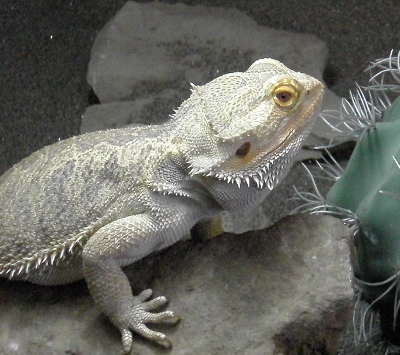
We hope you enjoyed the bearded dragon as our Animal of the Month for November. But as the month is winding down, so is our time on Twitter with this engaging animal. If you haven’t been following us on Twitter @ExoticPetVets, here is a summary of our tweets about bearded dragons. Did you know?:
-
There are eight species of bearded dragons, but the most common one kept as a pet is the Inland or Central Bearded Dragon (Pogona vitticeps).
-
All bearded dragons originate from Australia and are found in arid, rocky and semi-desert regions of the country.
-
Australia banned the export of bearded dragons in the 1960’s.
-
The bearded dragons that exist outside Australia are all captive bred and may have limited genetic diversity.
-
Bearded dragons are often referred to as “beardies” by their owners.
-
Bearded dragons are friendly, social and gentle reptiles, who are responsive with people.
-
If well cared for, bearded dragons are great pets – even for children as long as there is proper supervision.
- Bearded dragons have a flat body with a triangular head and healthy adults grow to be 18-22 inches (45-56 cm) tip to tail.
- Bearded dragons have a “beard” or spiny pouch under their chin, which expands during mating or when they feel threatened.
- The bearded dragon’s spiny pouch also turns black when he is aroused or irritated.
- Bearded dragons also have spines that lie horizontally along the sides of their bodies.
- While the Salmonella bacterium is most commonly linked with turtles, bearded dragons can also be a source.
- Hygiene is key to preventing a Salmonella bacterial infection. Clean and disinfect your bearded dragon’s cage every time it is soiled.
- It’s important to wash your hands after handling your bearded dragon.
- Bearded Dragons flick out their tongue to explore their environment. It is a sensory function and is akin to “sniffing.”
- Bearded dragons are omnivorous, which means they both plant- and animal-based food, but they eat more veggies as they get older.
- Bearded dragons have a higher need for dietary calcium than phosphorus, but consult a vet familiar with reptiles for proper supplementation guidance.
- In captivity, and with good care, bearded dragons can live on average between 8-12 years.

